Months in the making, the Centenary Bazaar of the Tabernacle Congregational Church took place in 1922 to mark the centenary of the opening of the Tabernacle on Commercial Street. It was both a celebration and an event to raise £2,000 to purchase a property around the corner on Llanarth Street to convert into a Church House.
It was seen as the biggest thing of its kind ever held in the town and the first time that an attempt had been made to represent 'Old Newport'.
An estimated 200 workers were involved and the 250ft long by 16ft high scenery took over six months to paint. The scenery was painted by the "Leslie Grant" Studios with research by Mr B.T.A. Griffiths. The costumes and booklet were also designed by the studio and an estimated 200 costumes were made representing different periods of time.
The event was held on October 4th, 5th, 6th, 7th, 1922 at the Drill Hall, Stow Hill and the High Street scenery would feature the names of all the shops and offices in 1822 with the entrances leading to stalls such as an ice cream seller, confectioner and the Girl Guides.


The same view today with the Tabernacle being where Blue Banana and Greggs is located.
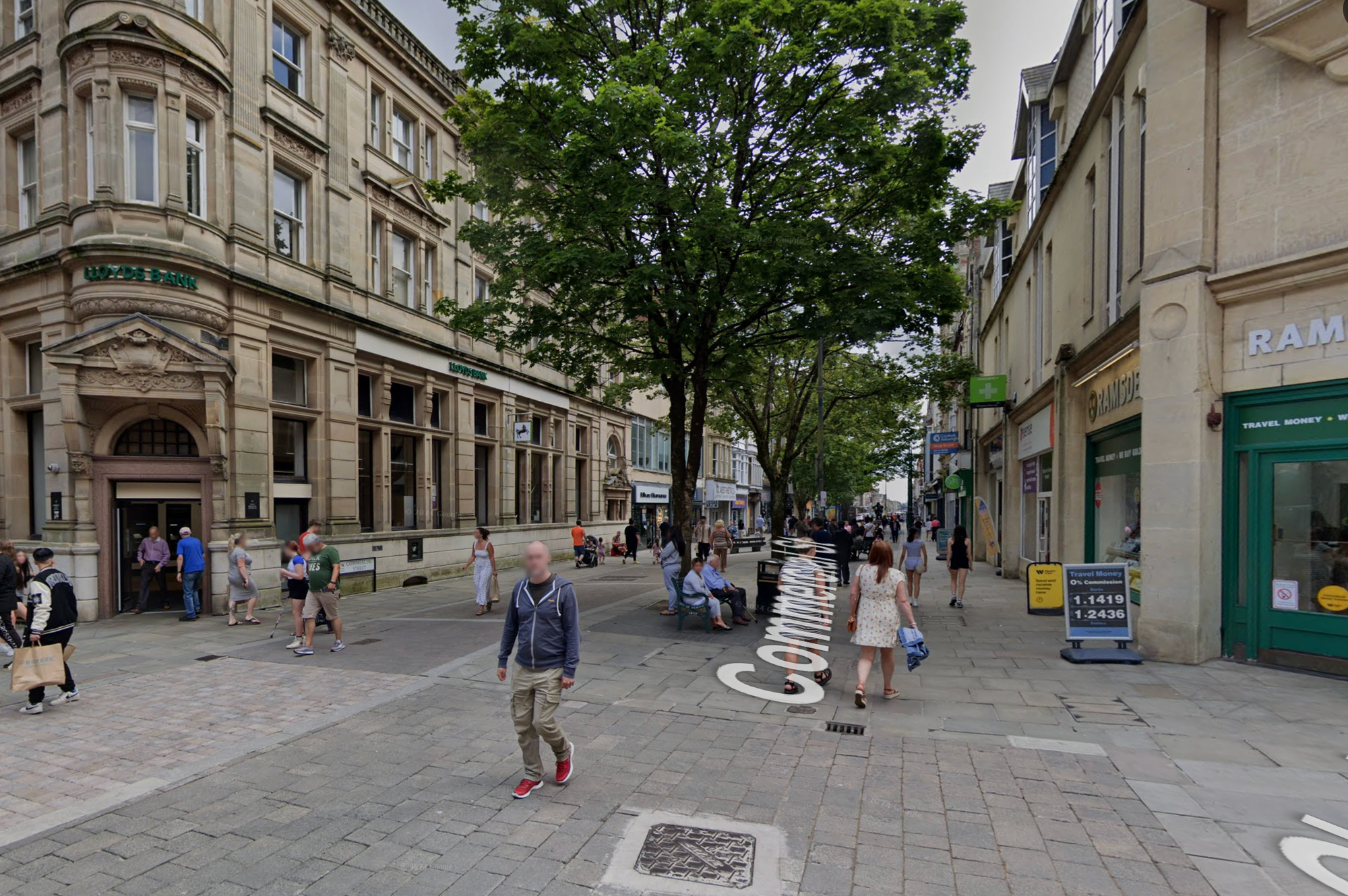

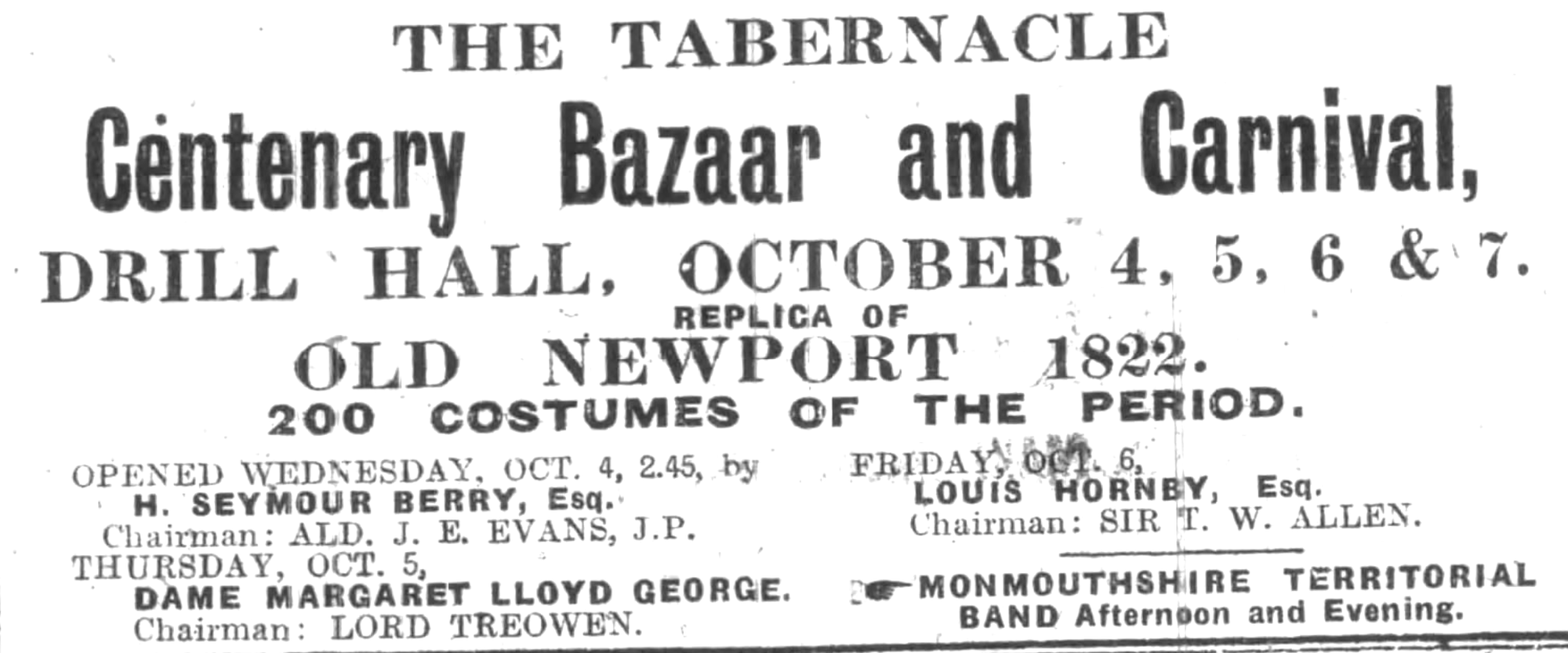

The following is a report of the event published by the South Wales Argus on October 4th, 1922 describing the scenery, who would have been present on high street in 1822 and the programme that was issued.
Picturesque Old High-street
The efforts of the Bazaar Committee have resulted in producing a most picturesque scene; and have for its purpose no better place could have been found in Newport than the Drill Hall, with its breadth the dwarfed by its length, giving in itself the impression of a rather long, narrow, and busy street.
The effort was to make the bazaar as faithful a replica of High-street in 1822, the houses and shops then existing being occupied by the stalls of the bazaar.
The Old Tradesmen
For instance, No. 1, High street (the Heathcock Inn, afterwards known as the Bridge Inn standing near the entrance to the Bridge), No. 2 "The Old Green," No. 3, "The Bristol House," and No. 4 are taken up by the refreshment stall. No. 5, "Abraham Jones, druggist," is now the ticket office for the side shows, etc. In No. 6 "Ann Morgan, ironmonger," ice cream will be dispensed.

In No. 7, "Thomas Jones Phillips, attorney," confectionery of various kinds will be sold, and similar goods will be found in "King's Head Hotel, Coach Office, John Morgan." No. 9 "The Carpenters' Arms, Adam Williams," is filled with artificial flowers, and No. 10, "Joseph Capon, fishmonger," is the Girls' Guild Stall.
No. 11, "J. Evans, draper," is now a place where "prophetic secrets" are revealed. Nos. 60 and 61. "Agent for Sir Charles: Morgan" and "D. Jones, jeweller," contain various side shows; No. 62 "Post Office, George Griffiths, Postmaster," contains other attractions. No. 63, "Joseph Grout, pipes and tobacco," is the scene of the activities of the Girls' Guide Stall.
No. 64, "Susan Morgan, draper, grocer, etc," No. 66, "Surgeon William Brewer," and the "Surgery" adjoining; No. 67, "Canal Office, Thomas Cooke, agent," and No. 68, "Dr James Hawkins," and "Surgery" adjoining, are all occupied by various stalls, representing the old market booths, which once stood in High-street, and adjoining these a replica of "The Stocks," which once stood there.
A Real Work of Art
Clever though the scheme is, it would by itself fail impress, were it not that every detail is carried out with absolute faithfulness bot as to colour and in design, though the faces as of the shops are, of course, constructed, of painted canvas.
The scheme and the painting has been carried out by Studios, out by Mr. Griffiths, "Leslie Grant" Studios, Newport and he has performed his work admirably.
The entrance into the Drill Hall is through the long corridor which is draped with- flags and bunting, and then once through the inner entrance doors the whole scene is open to the gaze. Even at first sight it impresses, but it is only upon close inspection that the care and skill exercised upon the various details is discovered.
At the one end of the room there is a large-sized canvas occupying the whole available space of the room, on which a painted view of the old narrow bridge across the Usk, rising sharply to the crown, and then dipping to an acute angle at either end. In the far distance appears Christchurch-hill, surmounted with a crown of trees, and the long, narrow and winding, roadway ascending it, flanked on either hand by fields and groves.
Only about half a dozen houses appear in this part of the painting, which gives a very vivid idea of the beautiful picturesque, but rather rugged, scenery, of this part of Newport in 1822.
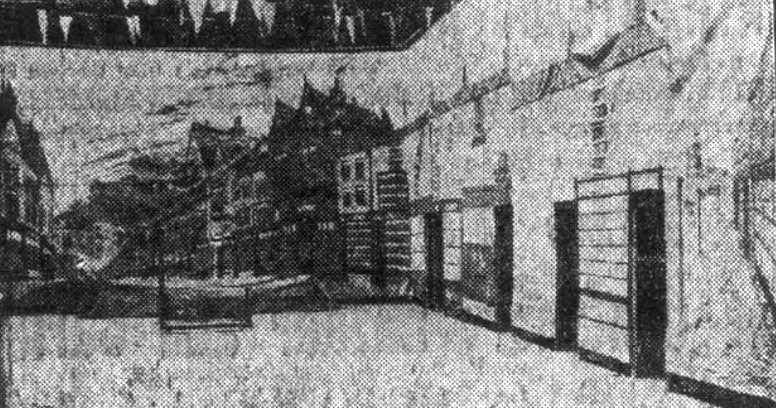
The colouring, the perspective, and the general effect is excellent, while much artistry is shown in the work.
A Picturesque View
The entrance to the bridge is closed by a six-barred gate. In the foreground, the ivy-covered top of one of the towers of Newport Castle peeps over the top of the adjacent buildings.
On the left is a mass of is picturesque buildings while on the right is the Heathcock Hotel, with its quaint facings and its raised footpath running in the direction of the Old Green Hotel. Then on the east side comes the Old Green Hotel, with its quaint 28 paned windows set close to the ground, and with similar windows in the two storeys above. Similar types of houses follow, but the monotony is broken at No.6 by a bow window above the door. Evidently our ancestors believed in colours, for A no two adjoining houses are painted alike, and there is none of the drab monotony of present streets.
There is a splash of colour at No. 7, where the smaller windows are outlined in red and black, contrasting with the blue and yellow of No. 6, the faded brown of No. 5, the vivid blue of No. 4, and the yellow of the Old Green. All of the houses, however, though each has its distinctive scheme of colour, are relieved and beautified by the treatment of the frames of the doors and windows, which further adds to the general effect.
The King's Head Hotel was an imposing building even in those days, and reared its head above all other buildings, more by reason of the height than the number of its storeys, but sombre in its grey and black. Nos. 9 and 11 are all dignified by bow windows, the first floor having a background of yellow, while the windows are picked out in red, brown and blue. The ground floors are also treated in various colours.
The most picturesque portion of the scenery is that at the bottom of High-street. This gives a view of the old Westgate, flanked on the left by the shop of James Evans, confectioner and fruiterer. In the centre rises the steep ascent of Stow-hill, the sides of which are clothed with trees. There is a beautiful view of St Woollos Church at the top, with its windows lit up. Then, returning up High-street, there comes a picturesque group of buildings on the west side, in which appears Murenger House (1530), the Tredegar Arms (1685), the Workhouse (Samuel Etheridge, master and printer).
A Blaze of Colour
This latter house stands out in blaze of vivd red, and the old fashioned mullioned windows, the sharp-pointed windows gables, and queer recesses, with rooms and windows tucked away in all sorts of unexpected places, make a most beautiful picture. Especially is this so at night, when both the views of St. Woollos and Christchurch at either end of the room are lit up, as well as the stalls on the sides and in the middle. At a certain hour at night-time, the bells will chime, and Vespers will be sung by a concealed choir.
On the west side of the street the most striking building is the Post Office, in its red and yellow garment. The Canal Office towers over all others, as befitted its importance in those days, and its quaint flattened bow windows on the ground floor, and the sharply oval bow windows on the first floor, make it a most picturesque object.
The Officials
The officials of the bazaar are: President, the Rev. Thomas Richards, C.F.; hon. treasurer Mr C.E. Smith, Clytha Park; hon. organising secretary, Mr. F. Fisher, Godfrey-road, Newport; hon. assistant secretary, Mr H. Lloyd Harries, York-place.
The Programme
The handbook and guide to the bazaar is in itself a valuable souvenir, and work of art. On the front cover there, in a, view of "Ye Olde Dip, 1822," which forms a part of the scheme of the interior of the bazaar. Then there are views of Newport Bridge and Castle in 1822, of Cromwell House, of the Trial of John Frost at Monmouth, of the Wesleyan Chapel in Commercial-street, in 1850; of the Old Town Hall in 1842; at Newport's First Free Public Library, of the Parrot Hotel, and of the burning of the first railway bridge over the Usk at Newport in 1848. There are also various photographs.

Old Coach Tour
The bazaar featured an old coach which could be boarded and it was planned to take it on a tour of Newport on the last day of the bazaar as part of a carnival.
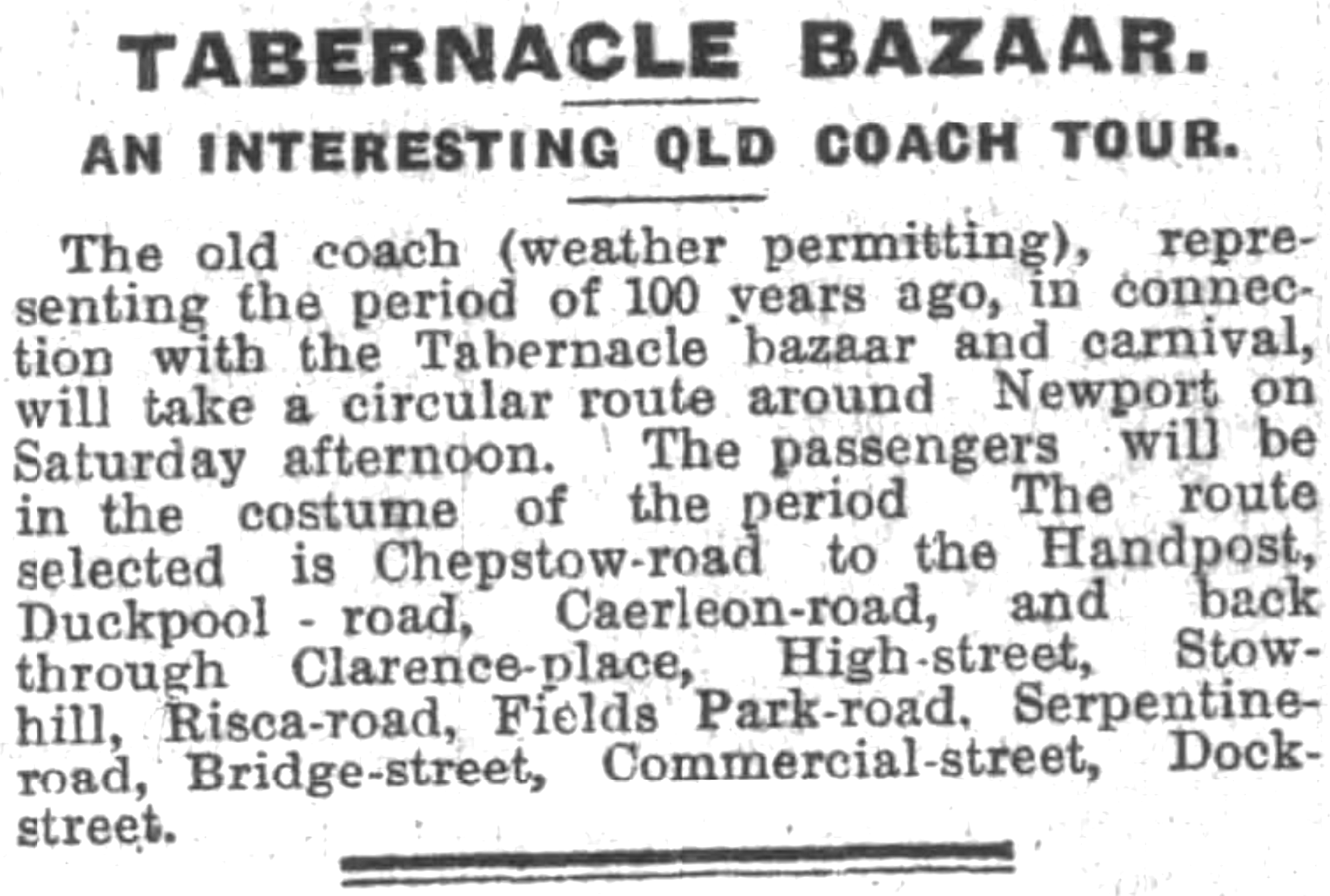

After the event, an old cartoon was published by the South Wales Argus about one of the people mentioned in the list of buildings in 1822.
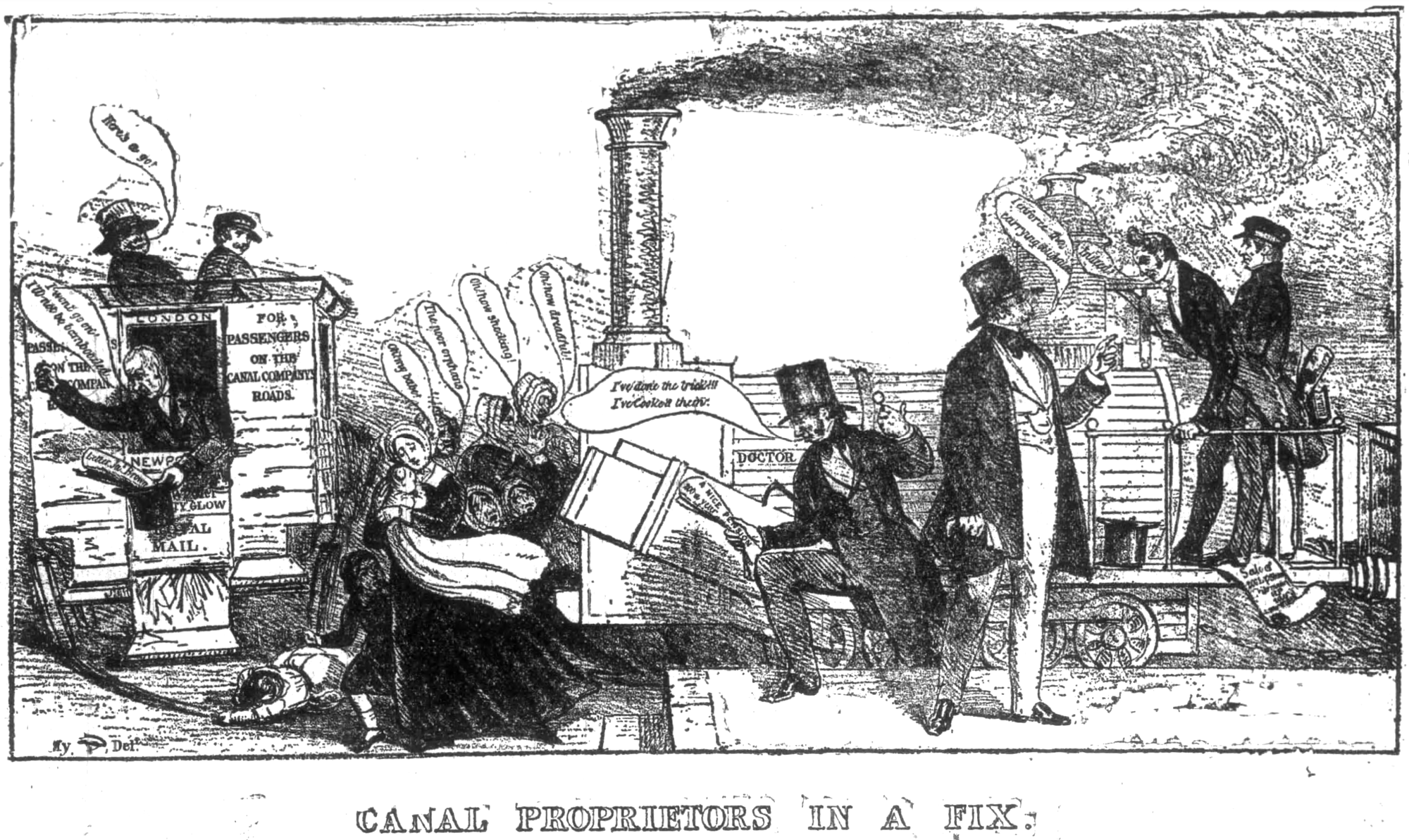
Visitors to the Old Newport Bazaar at the Drill Hall, Stow-hill, have read with interest the names over the shops and offices of the High-street of 1822. It. may have been noted that over one door is the name of Thomas Cooke, agent for the Monmouthshire Canal Company. This gentleman is the central figure of the very interesting old cartoon which we have reproduced — "Canal Proprietors in a Fix." It is an echo of an old controversy.
In 1848 the Monmouthshire Canal Company, afterwards incorporate with the Great Wester Railway, applied to Parliament for powers to convert their tramroads into railways. At this period the railways were somewhat under a cloud, and a number of shareholders were strongly opposed to the scheme. The Cartoon is a commentary on the situation, the shareholders being represented by the widows and children being crushed between the rival schemes. In the coach is Mr Blackmore, a director of the Company, while Sir Robert Peel, who presided over the Committee, is represented by the side of the engine, saying, "I enforce the carrying obligation." The gentleman running away with a pension is Mr Cooke, the Scretary of the Company, who was retiring at that time, while the gentlemen on the engine represent two of the principal witnesses for the proposal. Another very interesting point is the Mr Blackmore has in his hat a letter from James Brown, so that as early as 1848 this strenuous fighter was known as a great writer of letters. He afterwards was Mayor Newport two years in succession (1860 and 1861), and he was notorious for the way in which he fought the Great Western Railway. Mr Cooke was the father of the late Major T. Eborall Cooke, of Newport, in whose posession this Cartoon was for many years. He gave it to Mr H.R. Price, General Manager for the Brecon and Merthyr Railway (now retiring), who has presented it to Newport Museum.



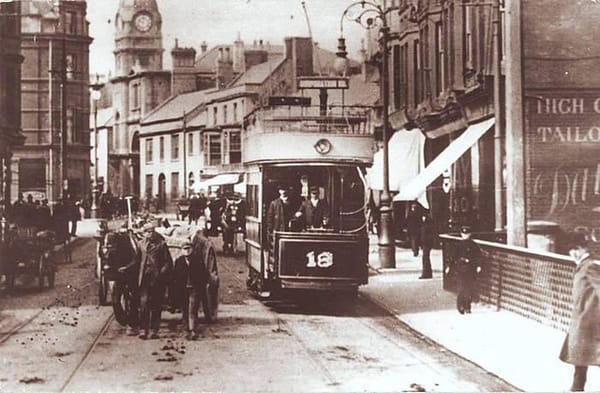

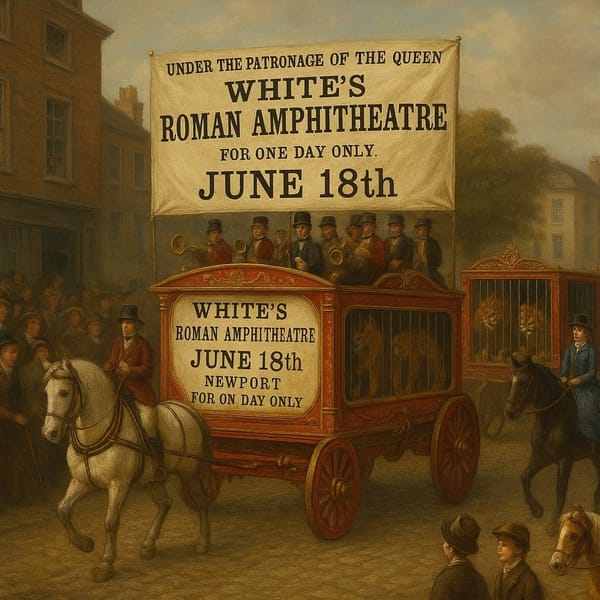
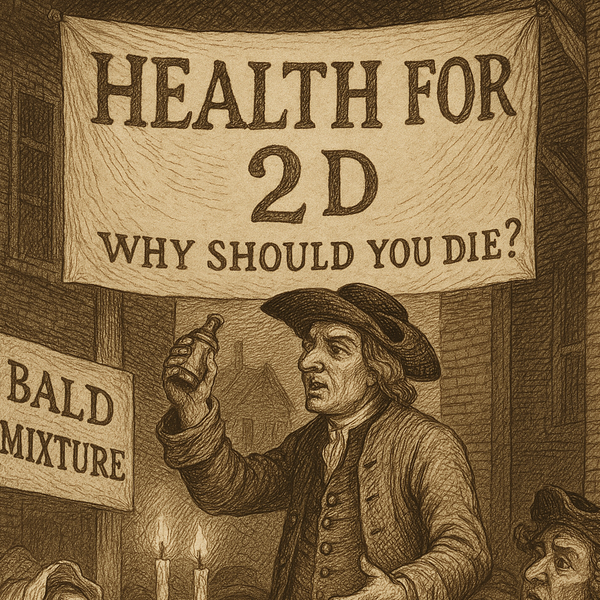
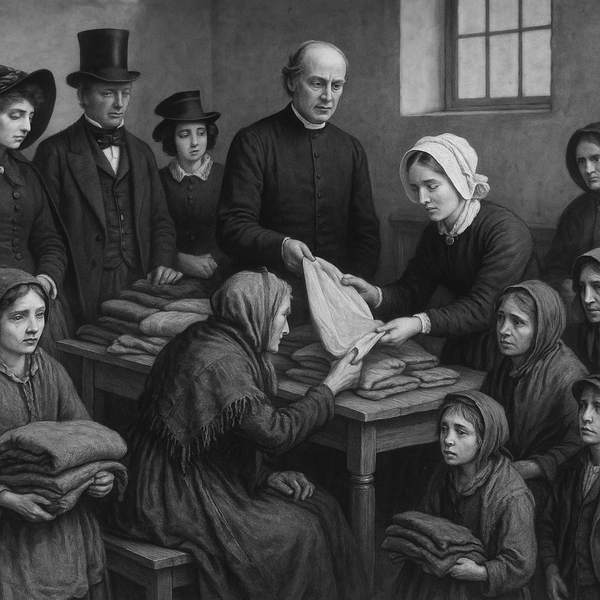
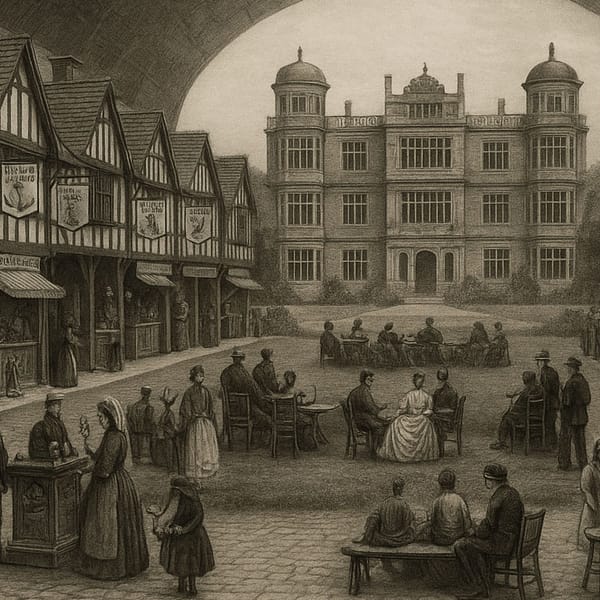
Member discussion